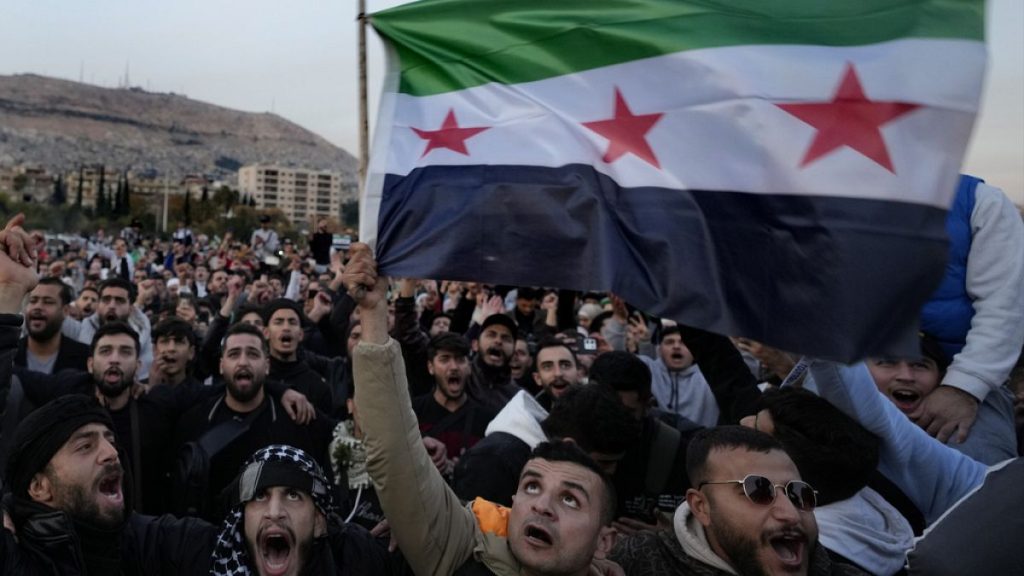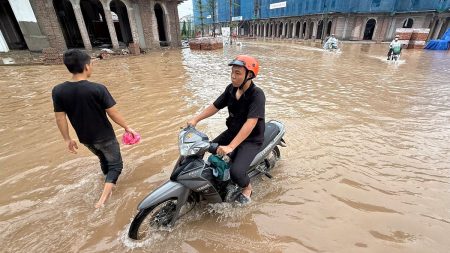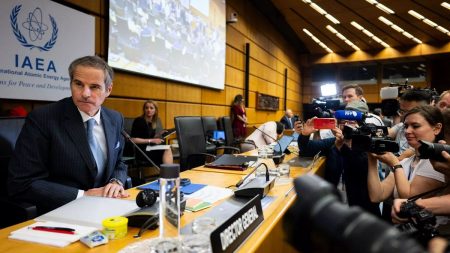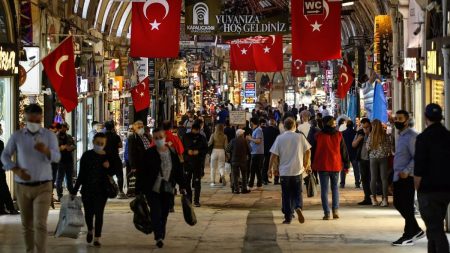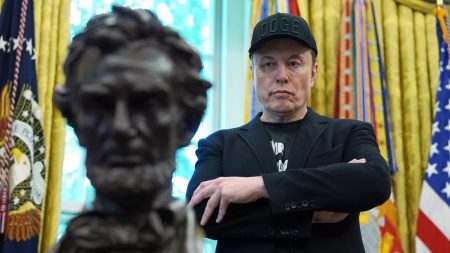Paragraph 1: The Syrian Public Sector Grinds to a Halt
The unexpected overthrow of President Bashar al-Assad by rebel forces has plunged Syria’s public sector into disarray. U.N. Resident and Humanitarian Coordinator for Syria, Adam Abdelmoula, described the situation as a "complete and abrupt halt." Essential services have been disrupted, with state workers abandoning their posts due to the sudden shift in power. This paralysis has far-reaching consequences, impacting even critical aid deliveries. For instance, a flight carrying vital medical supplies was grounded because aviation employees had deserted their jobs. Abdelmoula attributed this standstill to the decades-long rule of a single government and the subsequent demonization of the now-ascendant rebel groups by state media. He suggested it will take time and reassurance from the new authorities for public sector employees to feel safe enough to return to work.
Paragraph 2: A Nation in Transition and the Challenges of Governance
Syria is navigating a precarious transition, with the rebel coalition, HTS, assuming control of the capital. A meeting between HTS leader Ahmad al-Shaara and outgoing Prime Minister Mohammad al-Jalai signaled the beginning of discussions regarding the transfer of power. Leading the rebel alliance is al-Golani, a figure with a complex past. Formerly a senior Al Qaeda militant, he has since severed ties with the extremist group and pledged to establish a representative government that upholds religious tolerance. This transition comes with considerable challenges, including gaining the trust of a populace accustomed to decades of authoritarian rule and securing international recognition and support.
Paragraph 3: Hope and Uncertainty in a Post-Assad Syria
Amidst the political upheaval, a glimmer of hope emerges as Syrian refugees begin to return home from neighboring countries. Driven by the prospect of a more peaceful future, they also seek to reunite with relatives who vanished during the Assad regime’s reign. While Damascus experiences a semblance of normalcy, the scars of conflict remain evident. Most shops and public institutions remain closed, although celebrations continue in public squares. Civilian traffic has resumed, but public transportation is still absent, leading to long queues outside bakeries and food stores. The challenge of rebuilding infrastructure and restoring essential services looms large, alongside the need to address the deep-seated trauma and uncertainty that permeate Syrian society.
Paragraph 4: Seeking Answers and Closure in the Shadow of Repression
Across Syria, families gather outside prisons, security offices, and courts, desperate for information about loved ones imprisoned or disappeared during Assad’s rule. The Saydnaya military prison, north of Damascus, stands as a chilling symbol of the regime’s brutality. As rebels unlocked cell doors, the cries of women detainees, some with children, echoed through the facility. Human rights organizations like Amnesty International have documented the horrific atrocities committed within Saydnaya’s walls, including secret executions estimated to have claimed the lives of up to 13,000 Syrians between 2011 and 2016. The quest for truth, justice, and accountability for these crimes will be a crucial component of Syria’s journey towards healing and reconciliation.
Paragraph 5: The International Community and the Future of Syria
The international community faces a complex dilemma regarding the status of the HTS rebel group. Both the United Kingdom and the United States are reportedly considering removing HTS from their lists of designated terrorist organizations. This potential shift in policy reflects the evolving political landscape in Syria and the need to engage with the forces now in control. However, concerns remain about al-Golani’s past affiliation with Al Qaeda and the potential for extremist elements within the rebel alliance. The international community’s response will be crucial in shaping Syria’s future, including providing humanitarian aid, supporting reconstruction efforts, and promoting a political process that ensures stability and inclusivity.
Paragraph 6: Navigating the Path to Peace and Reconciliation
Syria stands at a critical juncture. The overthrow of Assad presents an opportunity for a new beginning, but also poses significant challenges. The immediate priority is to stabilize the country, restore essential services, and address the urgent humanitarian needs of the population. Long-term stability will require a political solution that accommodates the diverse interests within Syrian society and addresses the root causes of the conflict. This includes establishing a representative government, ensuring accountability for past human rights abuses, and promoting reconciliation between different communities. The road ahead is fraught with uncertainty, but the hope for a more peaceful and democratic Syria remains alive. The support of the international community will be essential in helping the Syrian people navigate this difficult transition and build a future free from violence and oppression.




